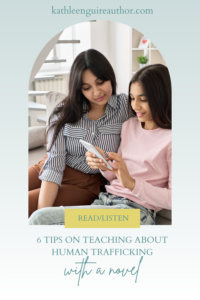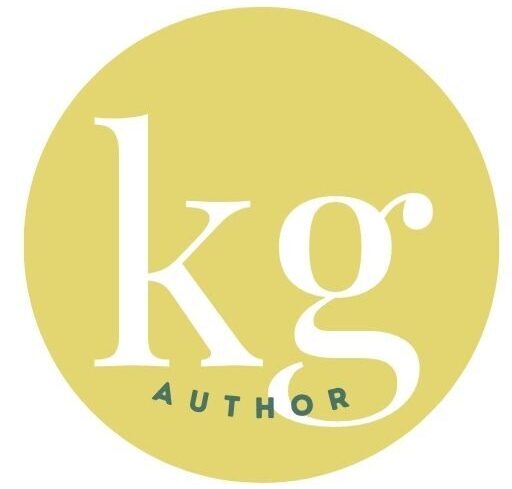Six Tips To Start the conversation about human trafficking with your teen with a novel
When a teen on my pre-read team for Defining Home said at a meeting, “I learned more about human trafficking from your book than I ever would have from a pamphlet, which I probably wouldn’t have read.”
When he said that I knew before my book was even published that I’d accomplished my goal.
As a trauma-informed teacher and homeschooling mom, I can say, reading novels and biographies to delve into cultural themes is much more effective than reading dry textbooks. Honestly, before I started homeschooling my kiddos, I had a rare gift, a family who loved literature and read out loud together and talked about books. When I entered high school and encountered some teachers who simply read from a textbook I knew there had to be a better way. Just to be clear, I am not putting down educators. I have a teaching degree and both my parents have masters and doctorates. Education is kind of my family’s jam. Teachers don’t always have the freedom to choose what students read.
When I homeschooled my kiddos, after floundering around creating my own curriculum with a spattering of self-paced workbooks, I finally found a literature rich curriculum with tons of novels, biographies, and some not so dry history books. I paid for said curriculum with tax returns and many times catered weddings and other events with my hubby.
With the curriculum we spent hours a day reading whole books out loud and then discussing concepts. For us, it was the best way to learn. Switching from rote learning – memorizing facts and spitting them out (there’s a place for that and some kiddos love that) to critical thinking, forming opinions, connecting with a character and learning from them became the foundation for our learning together.
When we read Johnny Tremain and I asked my kiddos what the colonists should have responded to the heavy taxation, one of my sons replied, “Blow them all up.”
Through the years, his replies were more thought out, but always had a military theme. In fact, in high school, he read everything he could get his hands on about the civil war and collected books on the subject. He added works Gary Paulsen series. Then got into survival sports (survive or die) such as white water kayaking, winter camping, and repelling. My long winded point? It all starts with reading a book and letting the child express his opinion without judgment. At some point, there can be some gentle leading.
Using a book to teach about human trafficking
Pretty much any cultural issue can be taught about with a book. War, crime, drugs, trafficking, religious persecution add your own (bullet list).
If you’re new to this concept, I’ve got you covered.
ONE.Choose a book that covers the topic you’d like to discuss. I’ve listed a few and I have a link to a free chapter of Defining Home.
TWO.Read. It’s that simple. You don’t have to have a certain economic status or the right wardrobe. Sit around the living room in your pjs. Make some hot chocolate. Drag out the lego bins or puzzles (it’s okay for kids to do something with their hands while you read. Movement helps many kids absorb the information). Start with a chapter or two. *this advice is not for toddlers
THREE. Discuss. Here’s some advice. Don’t get stuck on terms like protagonist, nemesis, and plot. Instead focus on the story. It’s okay to ask about the above if your child already speaks those terms in everyday conversation. Otherwise say – who is this about? What’s going on? Another great practice is to let the child retell the story in his own words. Or read a section and then ask a few questions. The workbook I created for Defining Home says: How to use this workbook:
I’ve included quotes with questions from chapter one. I’ve included the quotes so you don’t have to thumb or scroll through the book constantly. Plus, these quotes are great for reminding you of what’s going on in that particular chapter.
When I taught with this workbook, I assigned two chapters of reading at a time before we dove into a few questions from each chapter.
Treat this workbook like a buffet. You don’t have to discuss every quote and it’s totally okay if you end up going down a rabbit hole in your discussions. The point of the quotes and questions is to get teens talking!
Here are a few questions I use with teens (these are in the workbook).
Quote:
Daria and I had been through a lot together. I was glad to see her laughing and helping with the littles. Lately, she had been acting so strangely. She had a boyfriend, and she was sneaking out to see him at night, which wasn’t like her at all. She didn’t seem focused on her own adoption. It seemed as if all her efforts were going towards this guy. And why? When I came to the orphanage as a little myself, she took me under her wing and we became inseparable. Today was the beginning of our dreams. I had prospective adoptive parents, and she had parents ready to sign on the dotted line. Why wasn’t she more excited about that?
Questions:
1. Should Adelina be concerned that her best friend has changed?
2. Do you think it is strange that Daria is sneaking out at night to meet a guy?
3. Do you have a friend who abandoned her/his dreams for a boyfriend/girlfriend? How did that work out?
4. What is Adelina’s coping mechanism? Do you have one?
As I said in the intro to the workbook and with any book you’re reading, the kiddos don’t have to answer every question in detail. The point of the questions is to start the discussion and get them thinking. Think of a time you were in a meeting and absorbed information. As everyone else discussed, your brain was in overdrive, but two days after the meeting, you had a great idea. Teens do the same. Let them talk about it days or weeks after it. When I taught Defining Home to a group of high school students, I often walked into the room and couldn’t start on my lesson plans. The teens had opinions they wanted to share about the chapters they had read. Sometimes their opinions were as simple as, ‘Why did she do that? That was so stupid!” (Totally okay)
FREE RESOURCES
Free resource to start the conversation about human trafficking
The workbook that will open your teen’s eyes!Treat this workbook like a buffet. You don’t have to discuss every quote and it’s totally okay if you end up going down a rabbit hole in your discussions. The point of the quotes and questions is to get teens talking!

FOUR. It’s easier to judge the actions and thoughts of a fictional character than our own.
FIVE. Teens get a lot of pressure to behave. When a character misbehaves and they are able to talk about it, it helps them feel understood.
SIX. A teen needs to have input about a subject before they can form an opinion or know how to respond or react. To quote Adrian Monk, here’s the thing, if they don’t get the input from you or a book you’re reading to them, they will get the information from someone else.
It’s surprising to me how many parents think so many things are out of their control, as if the world is happening to their kids and there is nothing they can do about it. Not to get off track too much. I recorded a few episodes on family government and family culture. I’ll link them in the show notes. If the idea that you have no control resonates with you, go back and listen to them.
Conclusion:
ONE.Choose a book that covers the topic you’d like to discuss.
TWO.Read. It’s that simple. You don’t have to have a certain economic status or the right wardrobe. Sit around the living room in your pjs.
THREE. Discuss. Here’s some advice. Don’t get stuck on terms like protagonist, nemesis, and plot. Instead focus on the story.
FOUR. It’s easier to judge the actions and thoughts of a fictional character than our own.
FIVE. Teens get a lot of pressure to behave. When a character misbehaves and they are able to talk about it, it helps them feel understood.
SIX. A teen needs to have input about a subject before they can form an opinion or know how to respond or react.

A missing friend. A mysterious newcomer. An orphanage full of secrets.
Like the workbook to accompany the first chapter. It’s linked in below!
FREE RESOURCES
Free resource to start the conversation about human trafficking
The workbook that will open your teen’s eyes!Treat this workbook like a buffet. You don’t have to discuss every quote and it’s totally okay if you end up going down a rabbit hole in your discussions. The point of the quotes and questions is to get teens talking!

Happy READING!
Pin it:


